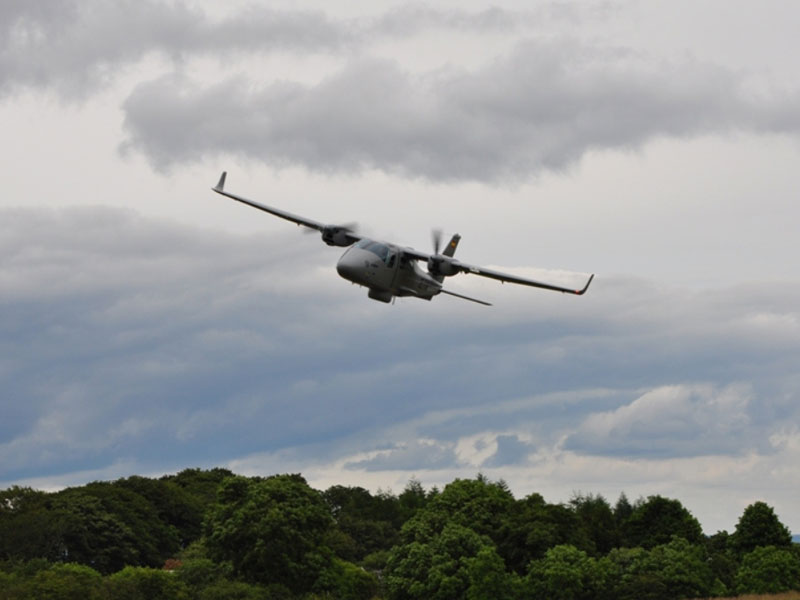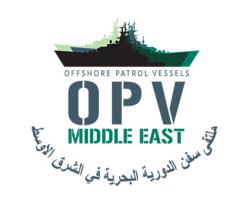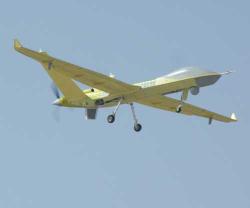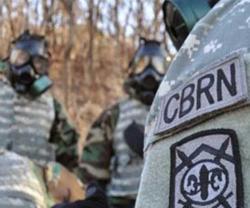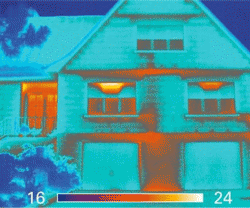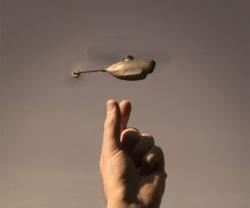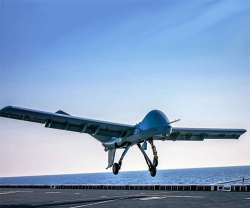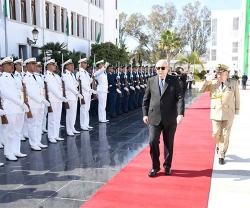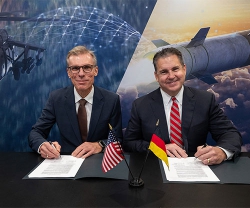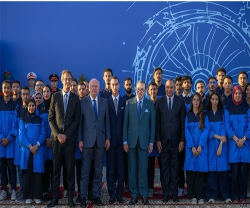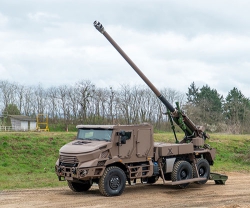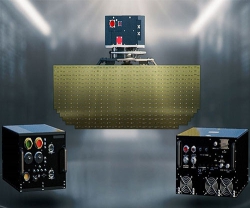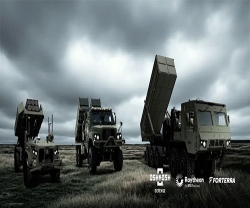Indra’s Maritime Patrol Light Aircraft
14.01.2013 South America
Indra has completed the development of an advanced maritime reconnaissance intelligence (MRI) system based on the Tecnam P2006T light aircraft.
This solution provides security, air-sea rescue and marine environmental control forces with the highest detection capacities at the lowest acquisition and operating costs in the market.
The P2006T MRI successfully passed a series of test flights off the Mediterranean coast and in the North Sea (Scotland) that started in March 2012. The system's performance was found to be excellent even in adverse meteorological conditions.
In these exercises Indra tested the combined operational capacities of the FLIR Systems large-format, latest-generation, high-definition electro-optical camera, the SELEX Galileo Seaspray 5000E radar and the AIS vessel identification system.
All the information compiled by these sensors is displayed by means the Indra ISIS mission system installed on board the aircraft.
The results showed that the reconnaissance and intelligence systems of the aircraft are capable of effectively covering an area of 3,000 to 5,000 square miles. Indra adapted the system to precisely correlate the information captured by the vessel identification system (AIS) with the data facilitated by the radar. The system was able to detect small targets and extract radar images (ISAR) from them, enabling the type of vessel to be determined.
The aircraft operated with a link to a control centre on the ground, which may be a dedicated radio link or via satellite. The tests checked its performance, enabling real-time monitoring of the mission and even the operation of the onboard systems and sensors from the ground support station.
Indra chose the P2006T to develop this advanced solution because it is a low-consumption, easily-maintained, silent, easy to pilot and well-tested platform (more than 160 units have been sold). The P2006T is a twin-engine, high wing aircraft with a length of 8.6 meters.
Once the tests were completed, the P2006T MRI was ready to enter into service and fly maritime surveillance missions from the coastline to 150 miles out to sea. The aircraft can remain in a patrol zone for 3.5 to 4.5 hours.
The system is designed to replace the medium-sized helicopters and light aerial platforms used by some coastguards. These types of aircraft do not usually have sensors and only the most advanced ones have electro-optical systems. For this reason, the capacities provided by Indra's P2006T MRI system are vastly superior. The Indra aircraft also uses conventional fuel to fly, significantly reducing its operating costs, and it can take off from and land on short, non-asphalt runways.
The next phase of the project is to convert the aircraft into an Optionally Piloted Vehicle (OPV), which, when legislation permits the use of Unmanned Aerial Vehicles (UAVs) in controlled airspace, will enable it to fly without a pilot.
This solution provides security, air-sea rescue and marine environmental control forces with the highest detection capacities at the lowest acquisition and operating costs in the market.
The P2006T MRI successfully passed a series of test flights off the Mediterranean coast and in the North Sea (Scotland) that started in March 2012. The system's performance was found to be excellent even in adverse meteorological conditions.
In these exercises Indra tested the combined operational capacities of the FLIR Systems large-format, latest-generation, high-definition electro-optical camera, the SELEX Galileo Seaspray 5000E radar and the AIS vessel identification system.
All the information compiled by these sensors is displayed by means the Indra ISIS mission system installed on board the aircraft.
The results showed that the reconnaissance and intelligence systems of the aircraft are capable of effectively covering an area of 3,000 to 5,000 square miles. Indra adapted the system to precisely correlate the information captured by the vessel identification system (AIS) with the data facilitated by the radar. The system was able to detect small targets and extract radar images (ISAR) from them, enabling the type of vessel to be determined.
The aircraft operated with a link to a control centre on the ground, which may be a dedicated radio link or via satellite. The tests checked its performance, enabling real-time monitoring of the mission and even the operation of the onboard systems and sensors from the ground support station.
Indra chose the P2006T to develop this advanced solution because it is a low-consumption, easily-maintained, silent, easy to pilot and well-tested platform (more than 160 units have been sold). The P2006T is a twin-engine, high wing aircraft with a length of 8.6 meters.
Once the tests were completed, the P2006T MRI was ready to enter into service and fly maritime surveillance missions from the coastline to 150 miles out to sea. The aircraft can remain in a patrol zone for 3.5 to 4.5 hours.
The system is designed to replace the medium-sized helicopters and light aerial platforms used by some coastguards. These types of aircraft do not usually have sensors and only the most advanced ones have electro-optical systems. For this reason, the capacities provided by Indra's P2006T MRI system are vastly superior. The Indra aircraft also uses conventional fuel to fly, significantly reducing its operating costs, and it can take off from and land on short, non-asphalt runways.
The next phase of the project is to convert the aircraft into an Optionally Piloted Vehicle (OPV), which, when legislation permits the use of Unmanned Aerial Vehicles (UAVs) in controlled airspace, will enable it to fly without a pilot.
Previous PostEmbraer Chooses R&S M3AR Radios for KC-390
Latest news
Latest events
Dubai International Air Chiefs’ Conference (DIACC 2025)
16 Nov 2025Atlantis, The Palm Dubai - United Arab EmiratesDubai Airshow
17 - 21 Nov 2025Dubai World Central (DWC) - United Arab EmiratesEgypt Defence Expo (EDEX)
01 - 04 Dec 2025Egypt International Exhibition Center New Cairo - EgyptDoha International Maritime Defence Exhibition & Conference (DIMDEX 2026)
19 - 22 Jan 2026Doha - Qatar

